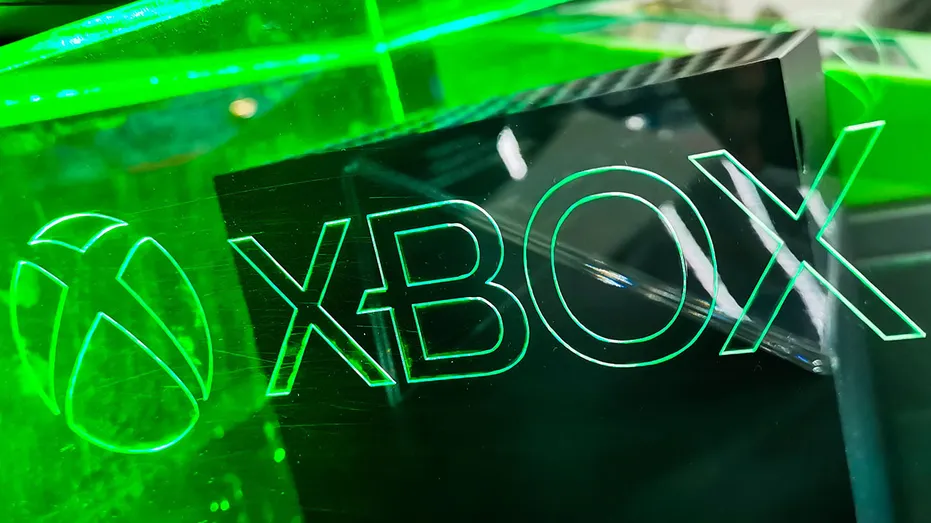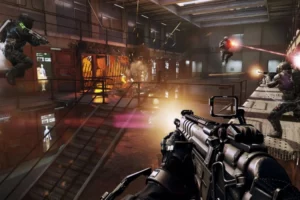Microsoft’s Xbox division is forging ahead with its ambitious foray into generative artificial intelligence, unveiling Muse, a new AI model designed to assist game developers in creating and optimizing games. While the company touts this innovation as a groundbreaking step forward, promising everything from enhanced game preservation to faster prototyping, reactions from developers have been far from enthusiastic. Many within the gaming community see Muse not as a tool for progress but as another example of technology prioritizing corporate interests over artistic integrity.
Muse, which has been trained on titles like Ninja Theory’s Bleeding Edge , boasts an impressive ability to understand the physics and 3D environments of games. It can generate visuals and player interactions dynamically, offering developers a way to streamline certain aspects of game creation. One of its most intriguing applications lies in reviving classic games. Microsoft envisions Muse studying beloved retro titles and adapting them for modern hardware, potentially bringing dormant masterpieces back to life. Fatima Kardar, Microsoft’s corporate vice president for Gaming AI, expressed excitement about this possibility, stating that imagining these games playable on any screen with Xbox is “an exciting prospect.”
Yet, despite Microsoft’s optimistic vision, skepticism abounds. The announcement has sparked heated debates among developers, many of whom view Muse as emblematic of a broader trend: the encroachment of AI tools into creative industries at the expense of human craftsmanship. David Goldfarb, founder of The Outsiders studio and a veteran game developer, minced no words in his response to the news. “Fuck this shit,” he declared bluntly. In a follow-up message, Goldfarb elaborated, arguing that generative AI threatens to undermine decades of collective effort by artists and designers. He described it as a tool wielded by executives looking to cut costs rather than enhance creativity.
“The primary issue is that we are losing craft,” Goldfarb said. “When we rely on this stuff, we are implicitly empowering a class of people who own these tools and don’t give a fuck about how they reshape our lives.” His sentiments echo concerns shared by countless others in the industry who fear that AI will devalue their work and erode the very essence of what makes video games unique—their artistry and emotional resonance.
This backlash comes amid a turbulent period for the gaming industry. Over the past few years, thousands of developers have faced layoffs, leaving many questioning whether AI advancements are being driven by genuine innovation or simply cost-cutting measures. A WIRED investigation revealed that while some believe AI cannot replace human creativity, others worry about job security as companies increasingly adopt tools that automate tasks once performed by skilled professionals. For many developers, Muse represents yet another reminder of how disconnected corporate strategies can feel from the realities of game creation.
One anonymous AAA developer, speaking candidly under condition of anonymity due to fears of professional repercussions, criticized Microsoft’s approach. “It’s the classic issue of Xbox bleeding talent but also so heavily invested in GenAI that they can’t see the forest for the trees,” they said. According to this source, internal discussions around generative AI often lack transparency, with employees hesitant to voice dissent lest they jeopardize their careers. “They don’t see that nobody will want this,” the developer added. “They don’t CARE that nobody will want this.”
Another anonymous developer echoed these frustrations, highlighting the pressure to remain silent. “It seems to me that the real target of this model is not game developers but shareholders, to show that Microsoft is all in on AI,” they said. This perspective underscores a growing perception that Muse—and similar initiatives—are less about improving games and more about bolstering investor confidence in AI’s potential, even if tangible benefits remain elusive.
Microsoft insists that Muse aims to support, not supplant, human creators. Kardar emphasized the importance of shaping generative AI breakthroughs collaboratively and responsibly, ensuring they align with the needs of the gaming community. To that end, the company claims it consulted 27 game creators globally during Muse’s development. However, critics argue that such efforts fall short when the underlying motivations appear rooted in profit rather than passion.
Even proponents of AI acknowledge its limitations. Marc Burrage, development director at Creative Assembly, noted that while AI might aid in rapid prototyping, it cannot replicate the nuanced learning process inherent to human-led design. Prototyping, he explained, is as much about the journey as the destination. “You need to have been on it to get all those learnings,” Burrage said. “Fast prototyping is a valuable skill you can’t just shortcut and think you’ll still be as prepared afterwards.”
For now, Microsoft remains undeterred, actively using Muse to create real-time playable AI models based on first-party games. Whether this endeavor will yield meaningful results—or merely deepen the rift between developers and executives—remains uncertain. What is clear, however, is that the conversation surrounding generative AI in gaming is far from settled. As companies like Microsoft push forward, they must grapple with mounting resistance from the very individuals whose expertise defines the medium.
Ultimately, the challenge lies in balancing innovation with respect for the craft. If Muse and similar technologies are to gain acceptance, they must demonstrate value beyond cost savings or flashy demonstrations. Until then, the divide between corporate ambition and creative authenticity will continue to widen, leaving developers and players alike wondering whether the future of gaming truly belongs to machines—or to the humans who breathe life into virtual worlds.
















Add Comment